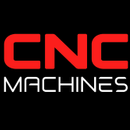Haas Automation VF Series: From VF-1 to VF-24

Haas Automation VF Series: From VF-1 to VF-24
Introduction
Haas Automation, founded in 1983 by Gene Haas, has become one of the leading manufacturers of CNC machine tools in the world. One of its most iconic product lines is the VF series of vertical machining centers (VMCs). The VF series began with the VF-1 in 1988, which stood for 'Very First One,' marking Haas Automation's entry into the CNC machining market. This article explores the evolution of the VF series, detailing each model and their travel sizes, and highlights the naming tradition carried over to Haas Formula One cars.
The Origins: VF-1
- Year Introduced: 1988
- Travel Size: 20" x 16" x 20" (X, Y, Z axes)
- Features: The VF-1 was designed to be a cost-effective solution for vertical milling, offering high precision and reliability at a competitive price. It quickly gained popularity and set the standard for the subsequent VF models.
VF Series Models and Travel Sizes
VF-2
- Travel Size: 30" x 16" x 20"
- Features: Larger travel size than the VF-1, making it suitable for bigger workpieces while maintaining the same precision and performance.
VF-3
- Travel Size: 40" x 20" x 25"
- Features: Offers even more extended travels, suitable for larger components and complex machining tasks.
VF-4
- Travel Size: 50" x 20" x 25"
- Features: Enhanced capabilities with increased travel length, suitable for large parts and assemblies.
VF-5
- Travel Size: 50" x 26" x 25"
- Features: Adds more Y-axis travel, catering to larger and more complex workpieces.
VF-6
- Travel Size: 64" x 32" x 30"
- Features: Provides a substantial increase in all travel dimensions, ideal for large-scale manufacturing projects.
VF-7
- Travel Size: 84" x 32" x 30"
- Features: Offers extended X-axis travel, accommodating even larger workpieces and assemblies.
VF-8
- Travel Size: 64" x 40" x 30"
- Features: Increased Y-axis travel, making it suitable for wide and expansive machining operations.
VF-9
- Travel Size: 84" x 40" x 30"
- Features: Combines the extensive X-axis travel of the VF-7 with the wide Y-axis of the VF-8, offering maximum versatility.
VF-10
- Travel Size: 120" x 32" x 30"
- Features: Designed for extremely long workpieces, providing exceptional X-axis travel length.
VF-11
- Travel Size: 120" x 40" x 30"
- Features: Similar to the VF-10 but with increased Y-axis travel, catering to wide and long parts.
VF-12
- Travel Size: 150" x 32" x 30"
- Features: The largest in the VF series, offering extensive X-axis travel for the most demanding and large-scale machining projects.
Haas Formula One and the VF Naming Tradition
Haas Automation's influence extends beyond CNC machines into the world of motorsport. In 2016, Haas F1 Team introduced their first Formula One car, named the VF-16. The 'VF' stands for 'Very First,' continuing the naming tradition from their CNC machines, symbolizing their first entry into Formula One racing.
VF-16 to VF-24
- VF-16 (2016): The debut car for the Haas F1 Team, featuring a Ferrari power unit.
- VF-17 (2017): An improved design with better aerodynamics and performance.
- VF-18 (2018): Enhanced aerodynamics and reliability, continuing to use Ferrari engines.
- VF-19 (2019): Focused on better tire management and overall performance improvements.
- VF-20 (2020): Further aerodynamic enhancements and weight reduction.
- VF-21 (2021): Adaptations to new regulations with minor upgrades.
- VF-22 (2022): Major redesign to comply with new F1 regulations, improved aerodynamics.
- VF-23 (2023): Continued development focusing on reliability and performance.
- VF-24 (2024): The latest model, incorporating cutting-edge technology and advanced engineering for competitive performance in the 2024 F1 season.
The Haas VF series of CNC machines has set industry standards for precision, reliability, and cost-effectiveness since its inception in 1988. From the VF-1 to the VF-12, each model has built on its predecessor's success, offering expanded capabilities and enhanced performance. The tradition of innovation and excellence extends to the Haas F1 Team, where the VF-named cars continue to represent Haas's commitment to cutting-edge technology and high performance year over year.


